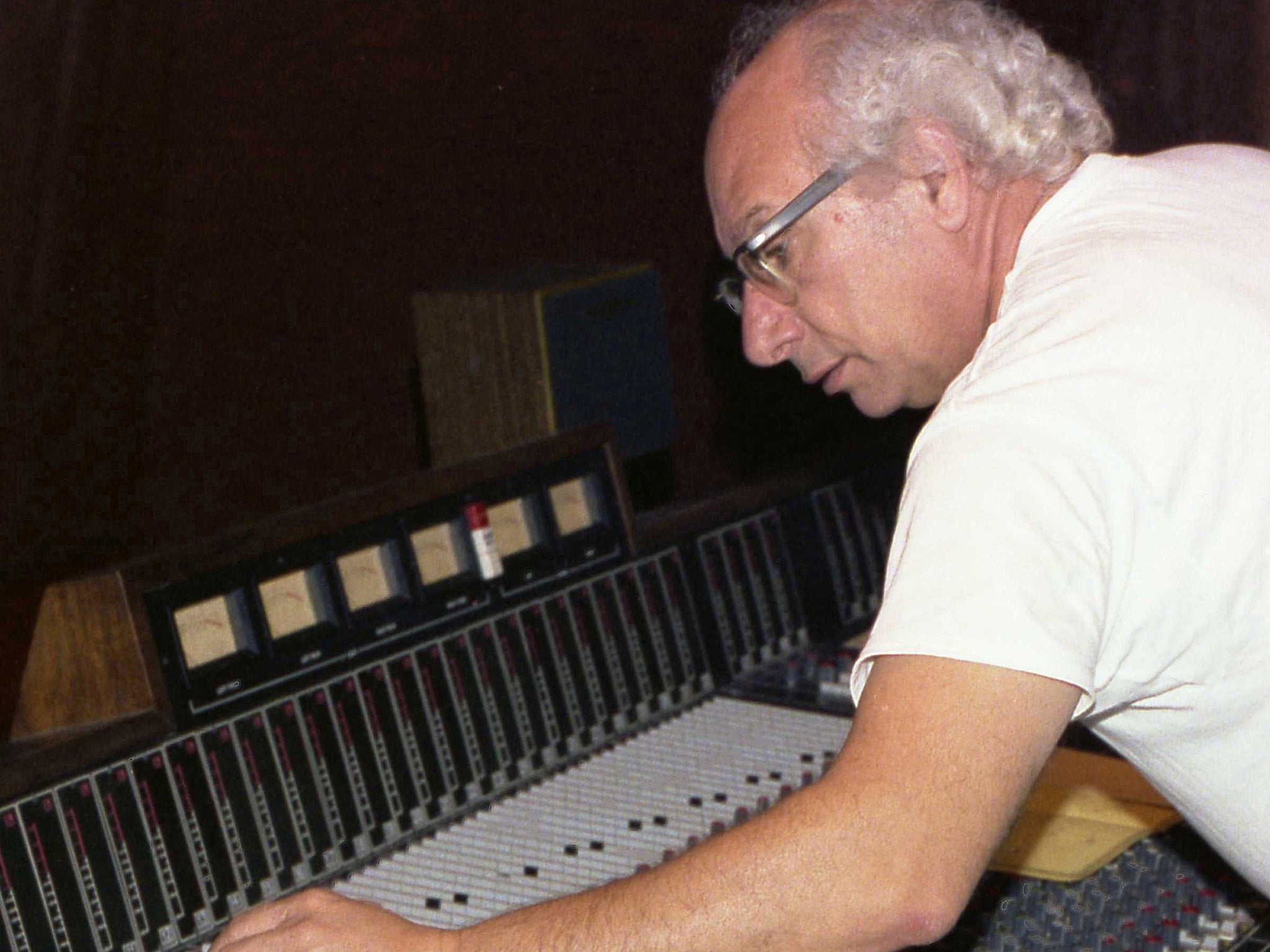Cosimo Matassa: Studio owner, recording engineer and creator of the 'Cosimo Sound'
An unassuming and modest man who said “a lot of good musicians who made me look good,” Matassa turned the technical limitations of a basic set-up that began as a demo studio in the back of his store into an asset

Between 1945 and 1977, the recording engineer Cosimo Matassa oversaw thousands of sessions at the three New Orleans studios he owned consecutively.
These resulted in 250 singles which charted in the US and internationally, and became staples of the rock’n’roll, rhythm and blues and soul repertoire. Among them were infectious songs like Roy Brown’s “Good Rockin’ Tonight”, a 1947 recording that predated Ike Turner’s “Rocket 88” by four years and could arguably be called the first rock’n’roll record; it was later covered by Elvis Presley.
He also oversaw Little Richard’s 1955 risqué debut hit, “Tutti Frutti” and several of the flamboyant rocker’s subsequent releases, including “Long Tall Sally”, “Jenny Jenny” and “Good Golly, Miss Molly”. Matassa also engineered many of Fats Domino’s classic sides, starting with the million-selling “The Fat Man” in 1950, and spanning “Ain’t That a Shame”, “Blueberry Hill”, “Blue Monday”, “I’m Walkin’” and “Walking to New Orleans”.
Matassa’s venture into label ownership with Dover Records in the mid-1960s introduced several more standards to the rhythm and blues canon, most notably Robert Parker’s “Barefootin’” in 1966 and Aaron Neville’s “Tell It Like It Is” in the same year, but floundered like many independent operations when its distributors proved slow to pay their bills. Matassa estimated this cost him around $200,000 and contributed to the eventual closure of his second studio, though he was soon back with a third, before manning the mixing desk at Sea-Saint, the studio, co-owned by the pianist, composer and producer Allen Toussaint, one of the many local players he had previously employed.
An unassuming and modest man who said “a lot of good musicians who made me look good,” Matassa turned the technical limitations of a basic set-up that began as a demo studio in the back of his store into an asset. Out of necessity, via shrewd microphone placement, he created what became known as the “Cosimo Sound”, with rolling piano, honking saxophone and driving drums to the fore, reflecting the gumbo, the melting pot of jazz, Creole and cajun genres in his hometown.
He continued to favour this technique after a move to bigger premises in 1956 on recordings featuring such sterling talents as the guitarist Earl King and the pianists Professor Longhair, Harold Battiste, Mac Rebennack, aka Dr John, and Willie Tee. “Those guys played with a lot of excitement, and I felt if I couldn’t put it in a groove, people weren’t going to move,” he said. “They were really performances as opposed to the synthesised records you make today.”
He captured the dynamism and raw emotion of vocalists like Jessie Hill (“Ooh Poo Pah Doo”), Chris Kenner (“Land of 1000 Dances”), Barbara Lynn (“You’ll Lose a Good Thing”), Lee Dorsey (“Get Out of My Life Woman”) and Johnny Adams – the much covered “Release Me”. Most of these tracks are gathered on a new Ace Records compilation Cracking the Cosimo Code, a reference to Matassa’s labyrinthine masters labelling system. The collection is a fitting tribute to the engineer whose invaluable contribution to New Orleans music was recognised when he was inducted into the Rock and Roll Hall of Fame as a non-performer in 2012.
Born in 1926 to Sicilian immigrants, he helped out in the family grocery and jukebox business in the French Quarter of the Crescent City. In his teens he started selling second-hand records from the machines and returned to this profitable venture after studying chemistry at Tulane University for a couple of years.
Having set up J&M Music, whose name came from the initials of his father and his partner, in 1946 he transformed a 15ft-by-16ft space into a direct-to-disc operation, New Orleans’ first commercial studio. Originally available for $15 an hour, it was the place where a teenage Jerry Lee Lewis cut his first demo, where Lloyd Price made “Lawdy Miss Clawdy” in 1952, where Smiley Lewis recorded “I Hear You Knockin’” in 1955, the year before Matassa opened the bigger Cosimo’s Studio. There, Frankie Ford overdubbed his vocals over the backing track to Huey “Piano” Smith’s “Sea Cruise” in 1959, and Toussaint recorded his first solo album, The Wild Sound of New Orleans, in 1958, and produced Ernie K-Doe’s “Mother-in-Law” in 1961 and “It’s Raining” by Irma Thomas in 1962.
Following the closure of Jazz City, his third studio, Matassa spent his last three decades at the family deli, where he regaled visitors and music historians with stories about Ray Charles, Big Joe Turner and The Meters and other legends. He downplayed his role in creating some of the most irresistible and enduring music of the 20th century and said he had simply been the conduit for the talent of others. “If you didn’t know I was there, I did my job,” he said. “People expect me to have some sense of history, as though I’d hear a record and know this was going to be something we’d be talking about 30 years later. We were all busy making a living. We had a hell of a good time and it was a great way to make a living, but no, there was no sense of history. Certainly not with me.”
“Cosimo was the doorway and window to the world for us musicians in New Orleans,” said Toussaint. “When the Beatles heard Fats Domino, they heard him via Cosimo Matassa. He touched the whole world.”
Cosimo Vincent Matassa, recording engineer and studio and label owner: born New Orleans 13 April 1926; married Jennie Maggio (died 2009; three sons); died New Orleans 11 September 2014.
Join our commenting forum
Join thought-provoking conversations, follow other Independent readers and see their replies
Comments
Bookmark popover
Removed from bookmarks